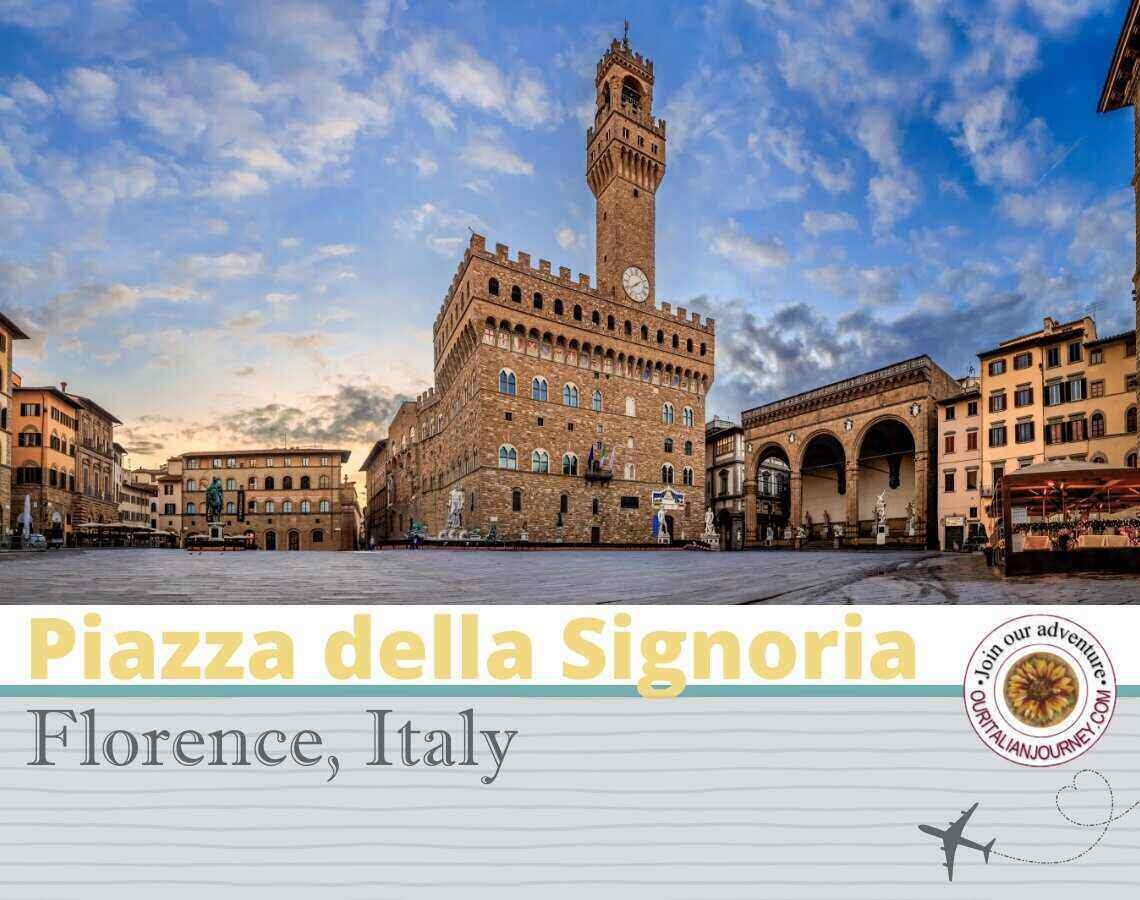Piazza della Signoria
The Piazza della Signoria is an L-shaped square located in front of the Palazzo Vecchio and was named after the Palazzo della Signoria, also called Palazzo Vecchio. The building is beautiful and amazing. Look at the different Coat of Arms above the first set of windows. They intrigue me.
This post contains affiliate links that help keep this website running. By purchasing through our links, we make a small commission at no extra charge to you. Thank you for your support!
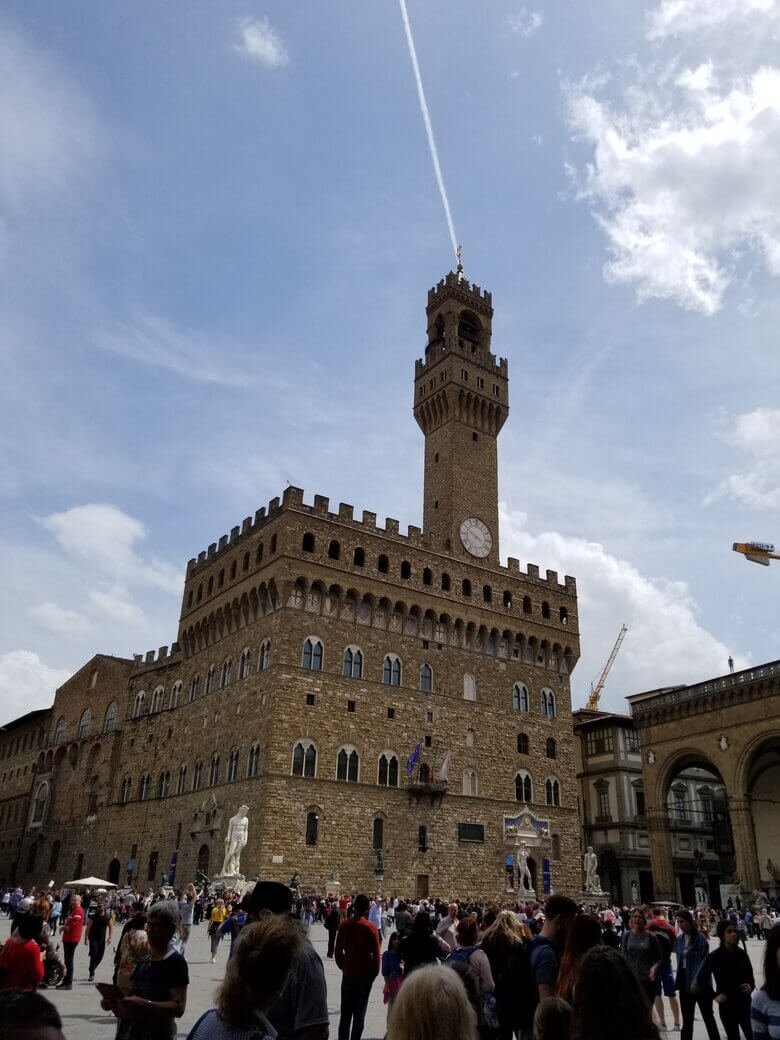
Most noteworthy, two statues are located in front of the Palazzo Vecchio (bottom of the photo above.) A copy of Michelangelo’s David (on the left), which replaced the original statue in 1873. Hence, the original can be viewed in the Accademia di Belle Arti and is definitely worth the visit! Hercules and Caucus which was sculpted by Bandinelli in 1533 are also found at the entrance on the right.
The Palazzo Vecchio is from the 14th century and was Florence’s town hall and is still today the seat of the local government. It is also a working building that has many offices used on a daily basis; including the mayor’s office.
The Dei Lanzi
The statues under the Loggia della Signoria also called “Dei Lanzi” an open-air sculpture galleries of antique and Renaissance art. My favorite is the Benvenuto Cellini’s 1545-1554 bronze Perseus with the head of Medusa (photo below). It reminds me of a 1981 movie I love called “The Clash of the Titans.”


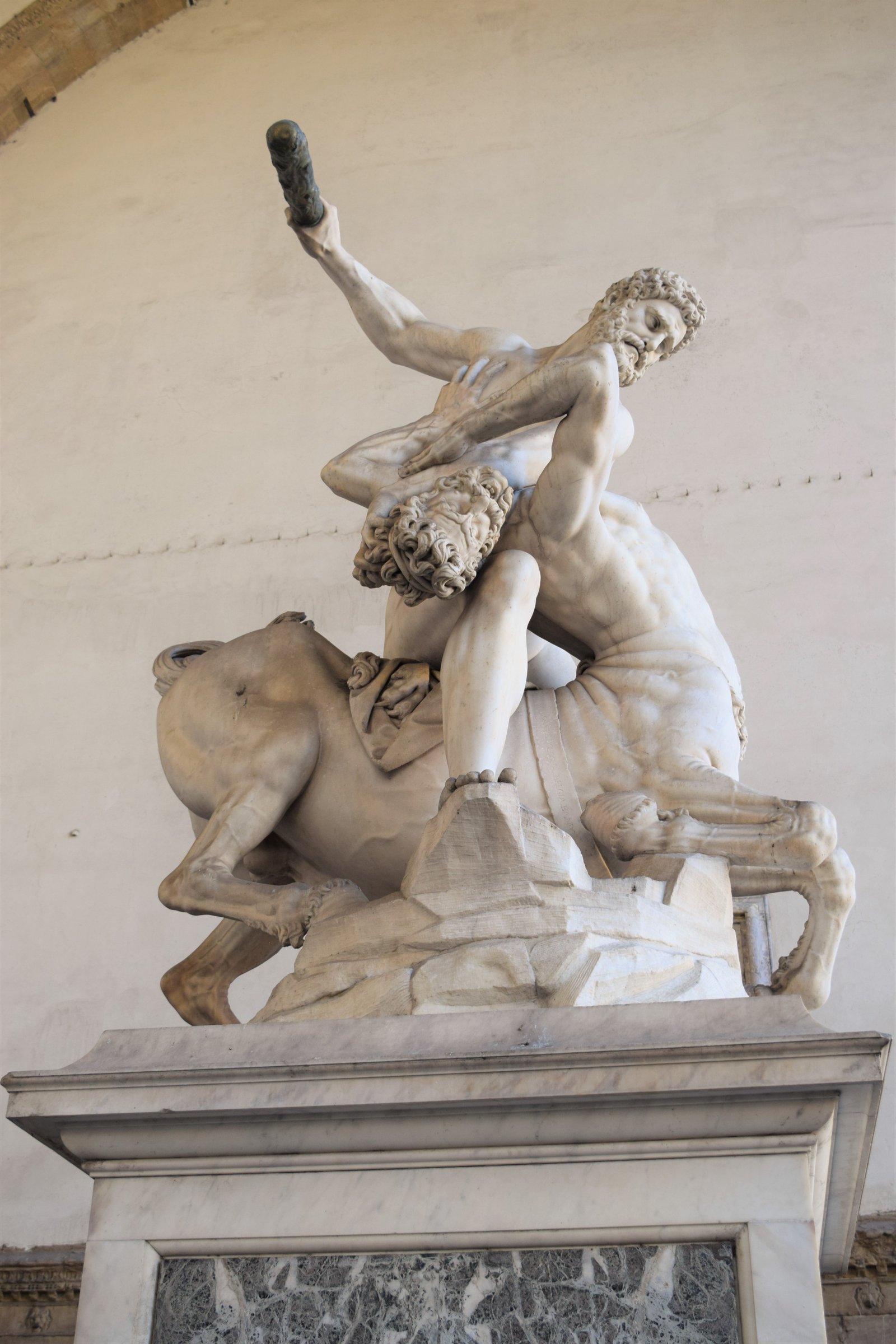
Piazza della Signoria Statues Include:
- LION (1594-1598), work by Flaminio Vacca
- PIRRO RAPES POLYXENA (1860-1865), work by Pio Fedi and under the Loggia since 1865
- ROMAN LADY called SABINE, and under the Loggia since 1789
- BARBARIAN PRISONIER called THUSNELDA, came from a Villa Medici in Rome, and in 1789 was placed under the Loggia
- MENELAUS SUPPORTING THE BODY OF PATROCLUS, (copy of flavian age of a Greek original) In 1570 it was placed near Ponte Vecchio, and then in 1741 placed under the Loggia
- HERCULES FIGHTING THE CENTAUR NESSUS (1594-1599), work by Giambologna, and under the Loggia since 1841
- LATIN INSCRIPTION (1750), commemorates the change of the Florentine calendar in 1749 to bring it into line with the Roman calendar. The Florentine calendar began on March 25 instead of January 1st
- INSCRIPTION (1893), in marble, records the Florentines who distinguished themselves during the independence wars
- RAPE OF THE SABINE WOMEN (1581-1583), marble and bronze work by Giambologna and under the Loggia since 1583
- LION, came from Villa Medici in Rome, and under the Loggia since 1789
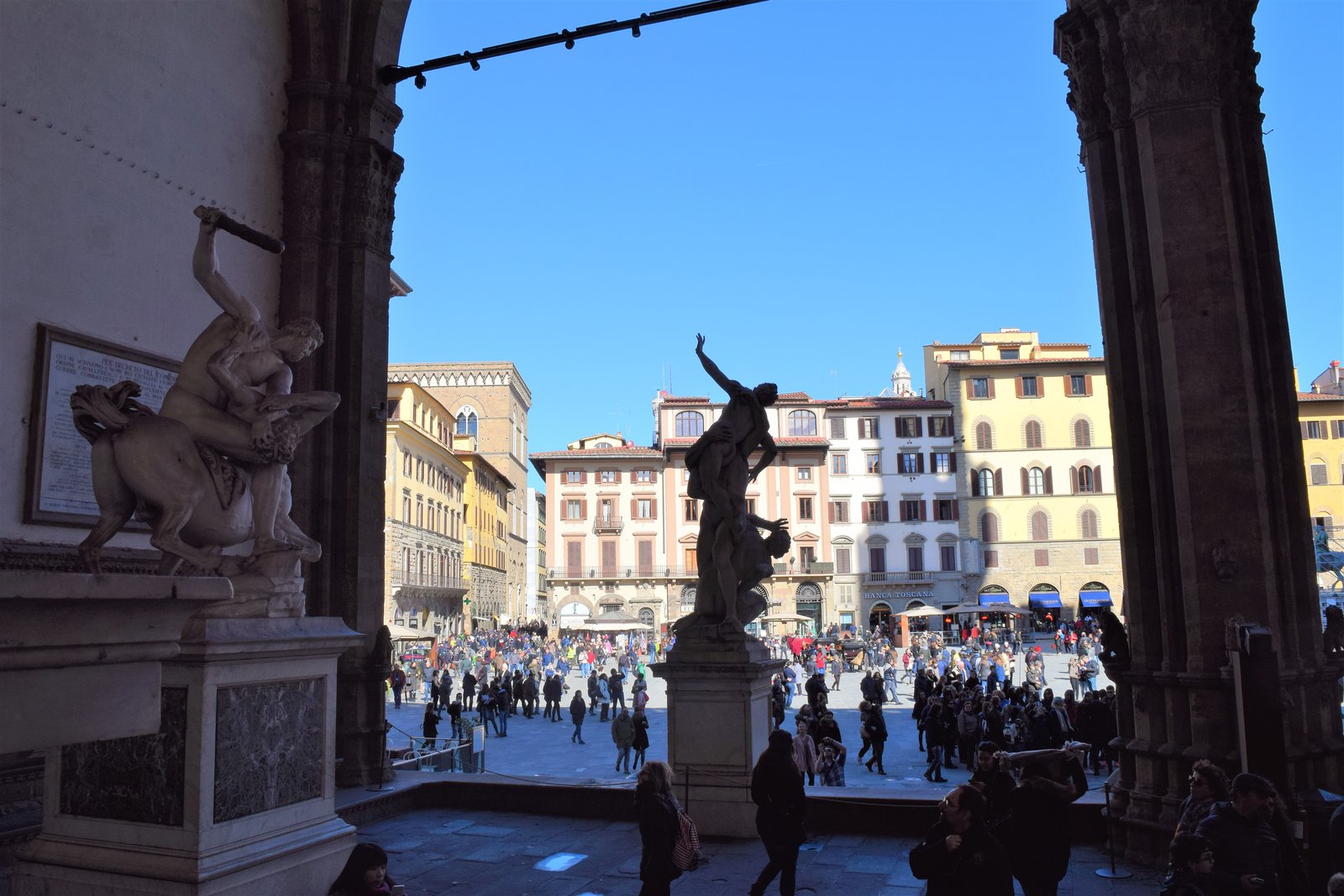

Did you know?
Above the Loggia (the ceiling) is the restaurant of the Uffizi Gallery. It has a great view of the Piazza below!
Also in the Piazza
In addition, also found in the piazza is The Fountain of Neptune, nickname “Biancone”. The statue stands on a high pedestal in the middle of an octagonal fountain. The equestrian statue in the piazza is of Cosimo 1 de Medici and was done by Gianbologna.
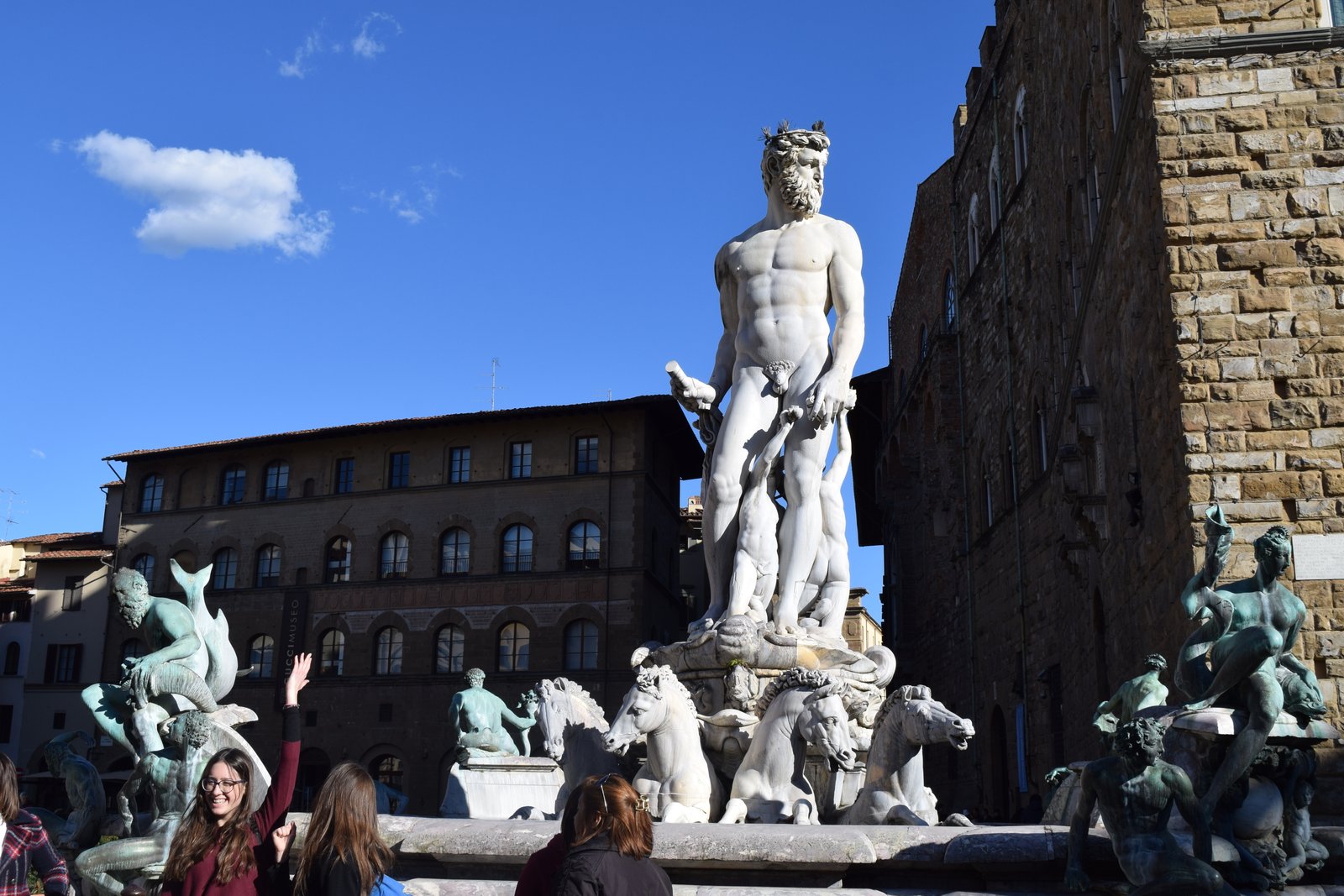
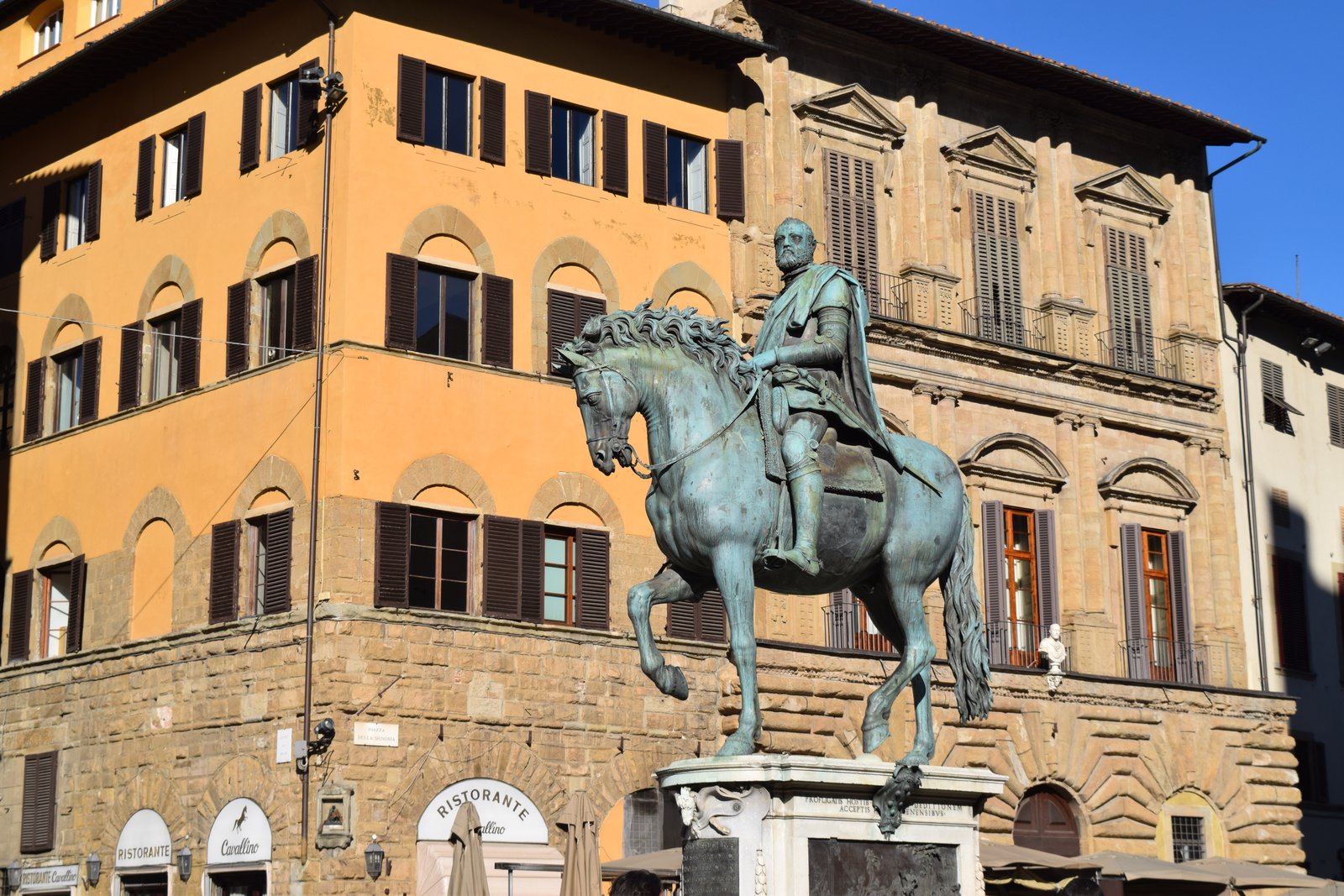
A Little Bit of History
Furthermore, the marker found in the Piazza della Signoria square is the remembrance of Girolamo Savonarola (1452-1498). Savonarola was a Dominican friar who was the leader of Florence from 1494-1498. He instigated the “Bonfire of the Vanities” hoping to cleanse Florence of everything he regarded as evil, such as art and wealth. In addition, he was responsible for destroying art pieces and books due to his desire to move Florence back to Medieval times. Many of Florence’s wealthy citizens were openly persecuted or killed and many others fled the city in fear for their lives.
As a result of issues with Pope Alexander VI, it is said that an angry mob swarmed him and took him to the Piazza della Signoria where he was to be burned alive. Finally, before the flames engulfed him, a man named Ezio, in an act of mercy, stabbed him in the neck killing him. They left his body to burn.
A 360 Degree View
Let’s also take a 360° view of the Piazza della Signoria while on an early morning visit. As luck would have it, they were setting up scaffolding to begin cleaning the fountain.
Piazza della Signoria is a great place to grab a panini, find a place to sit on the stone bench and people-watch!


